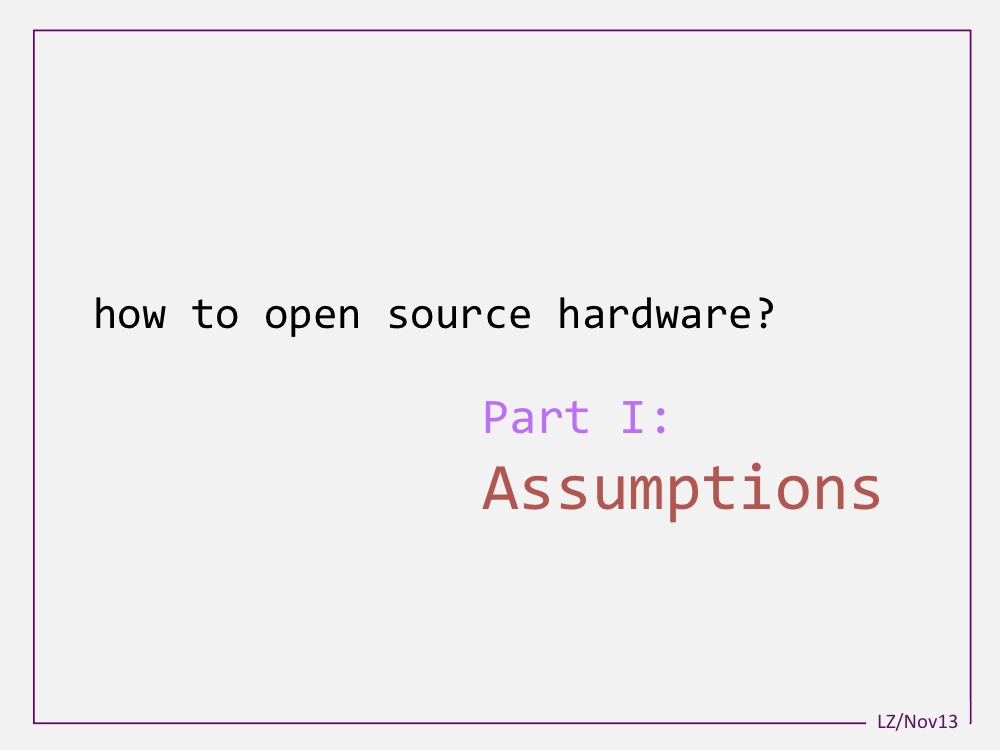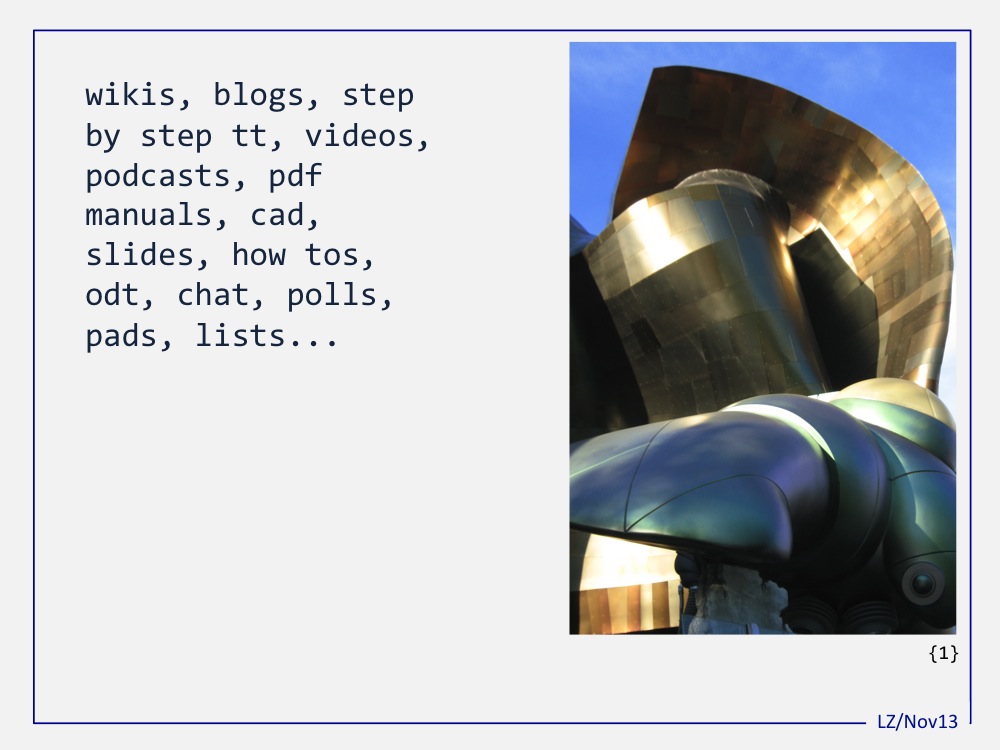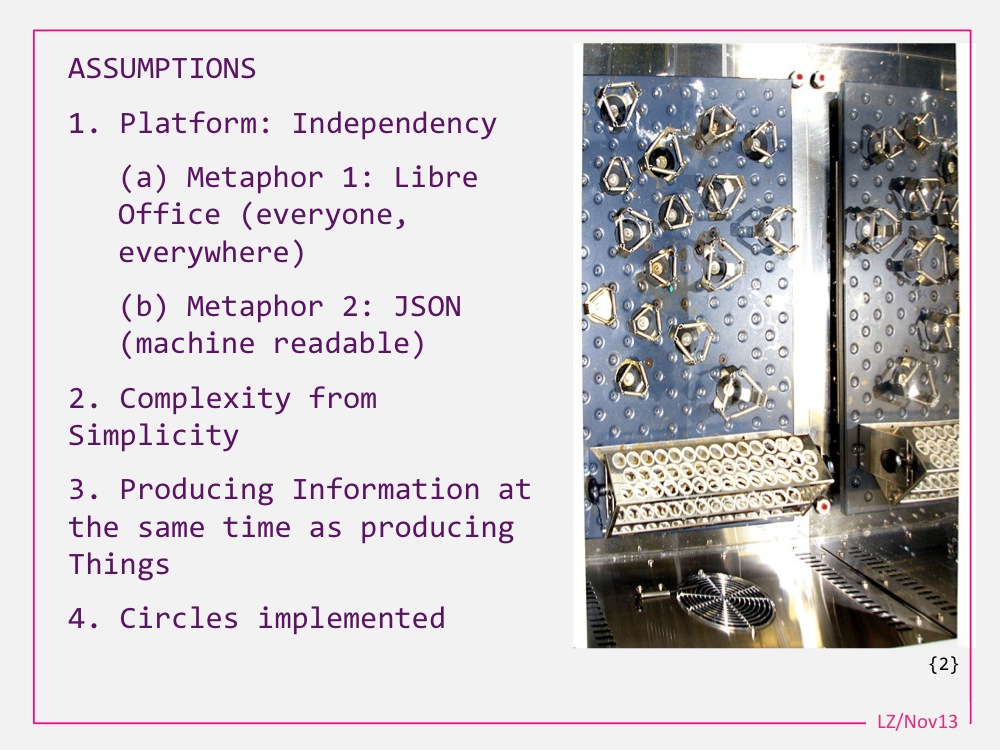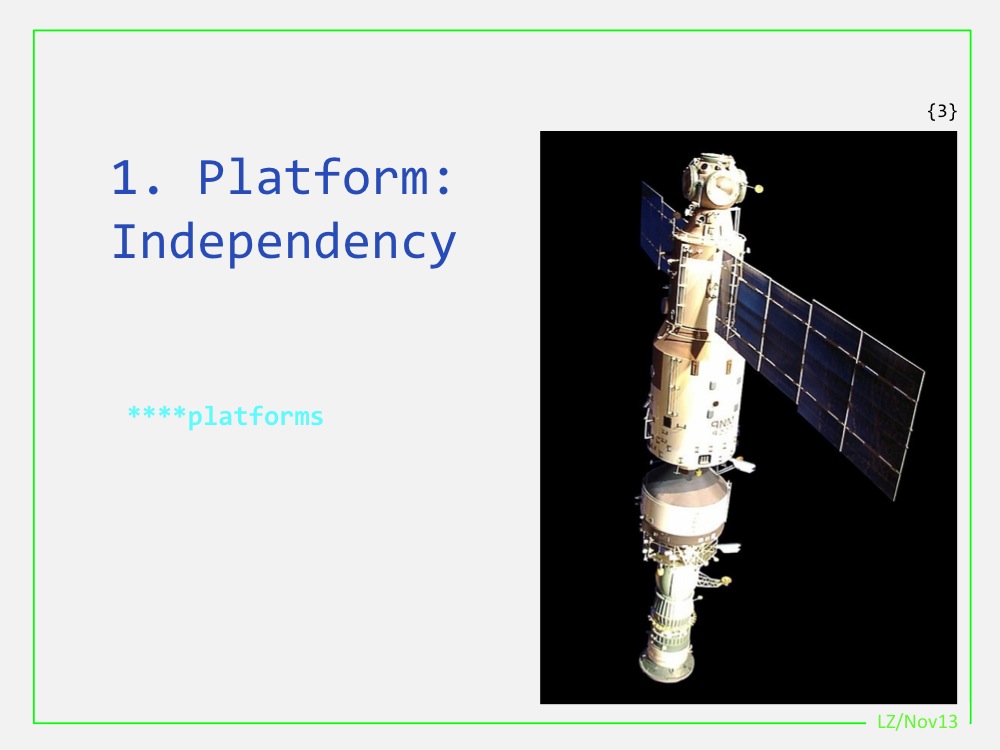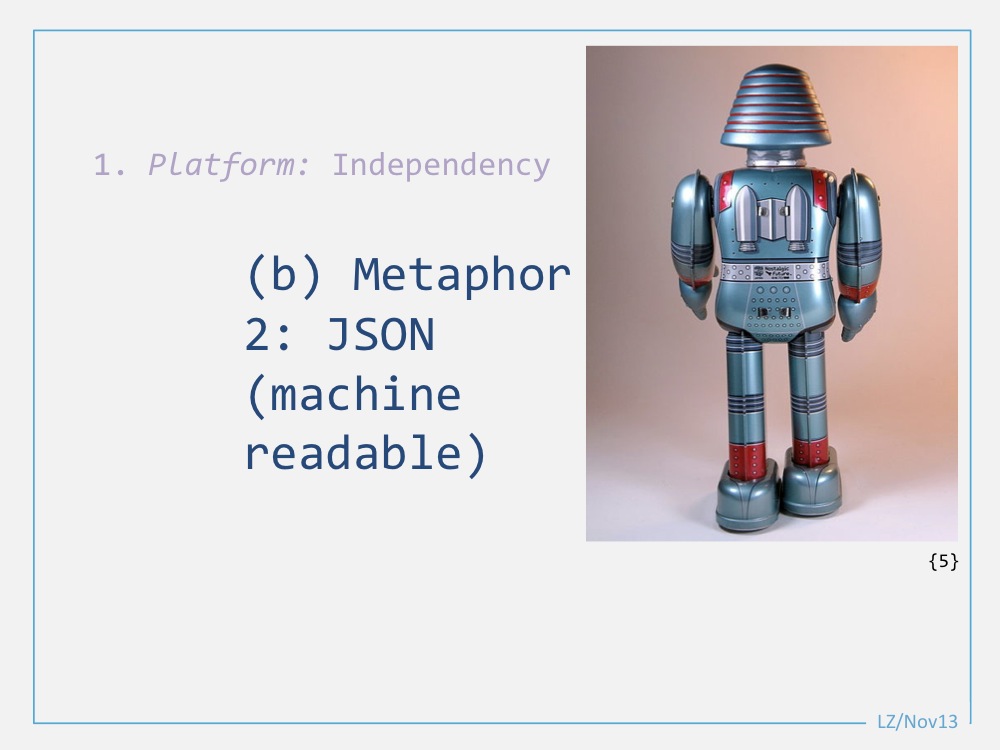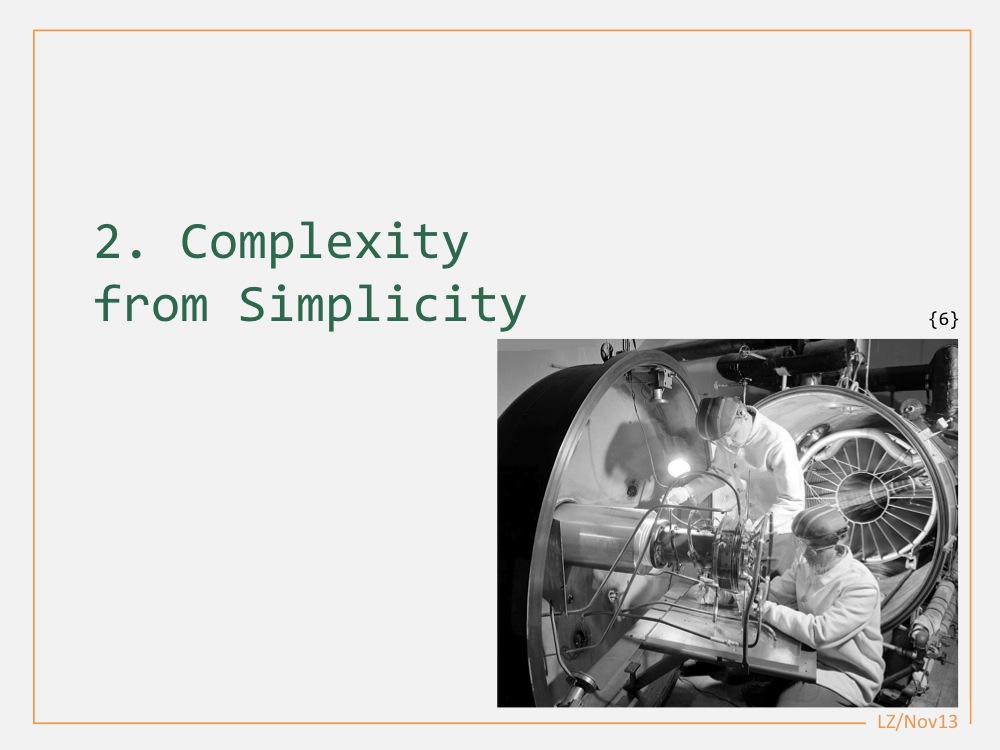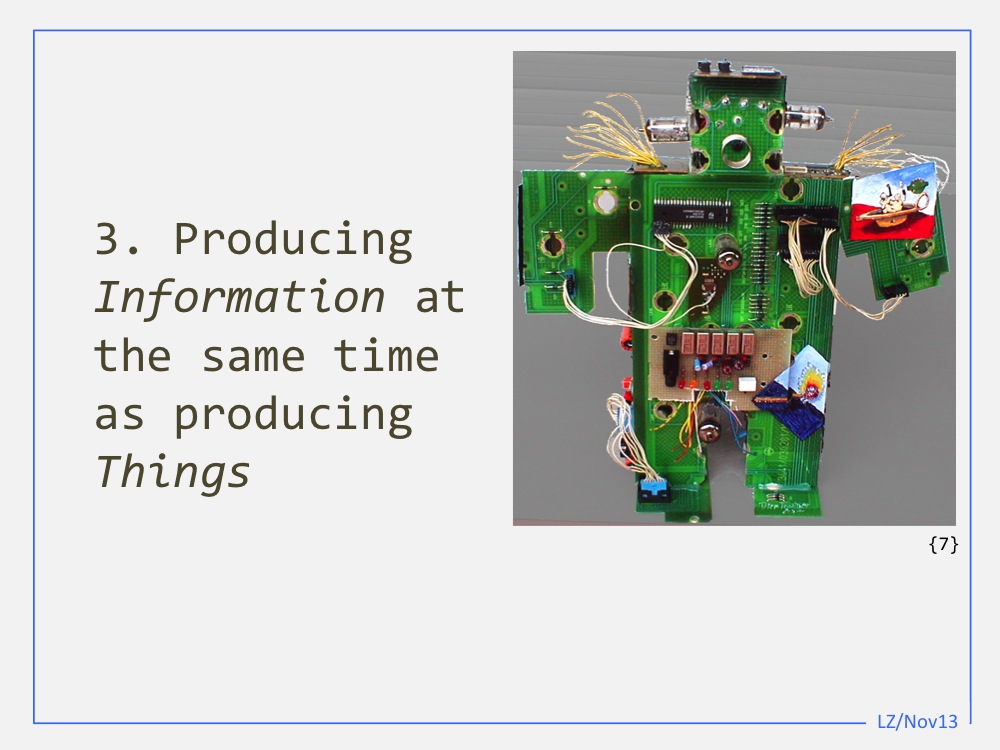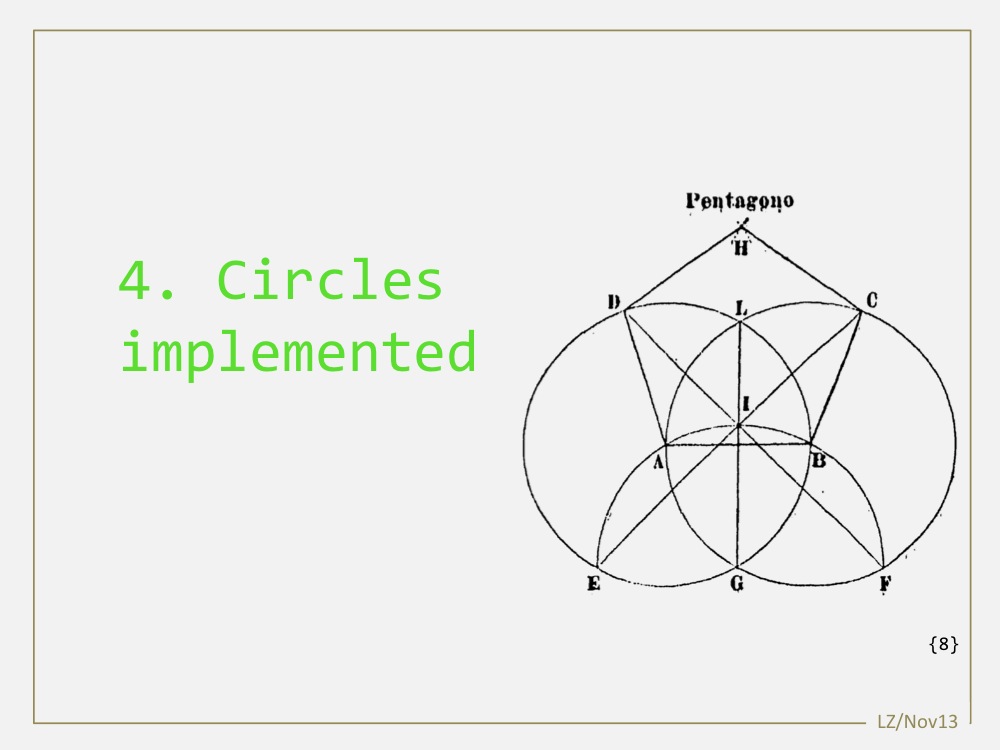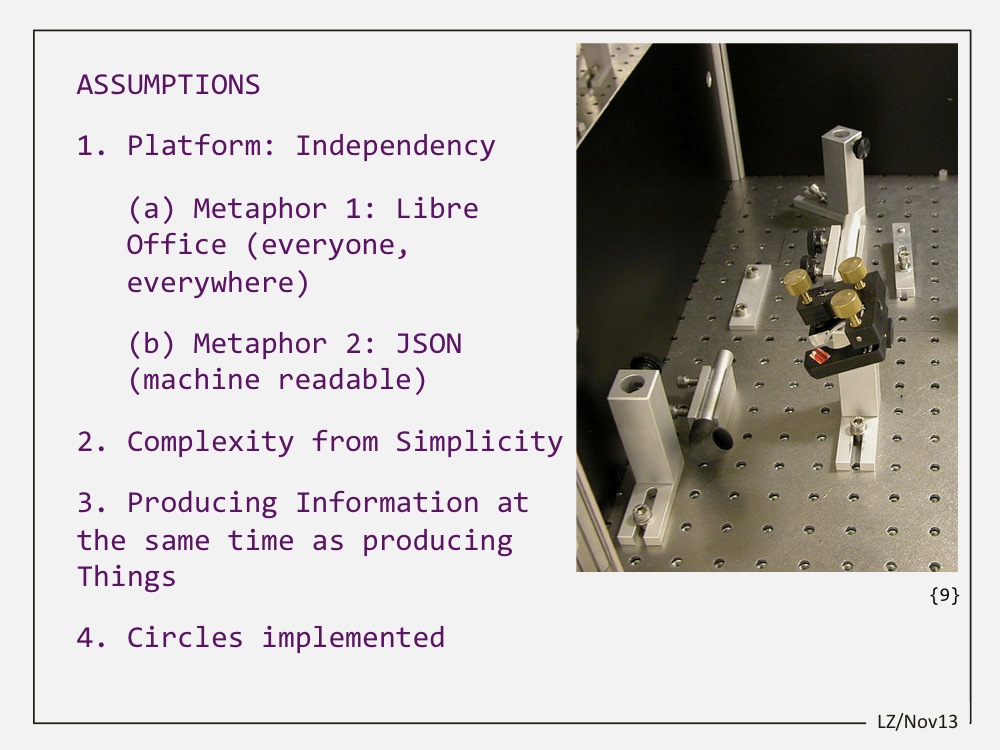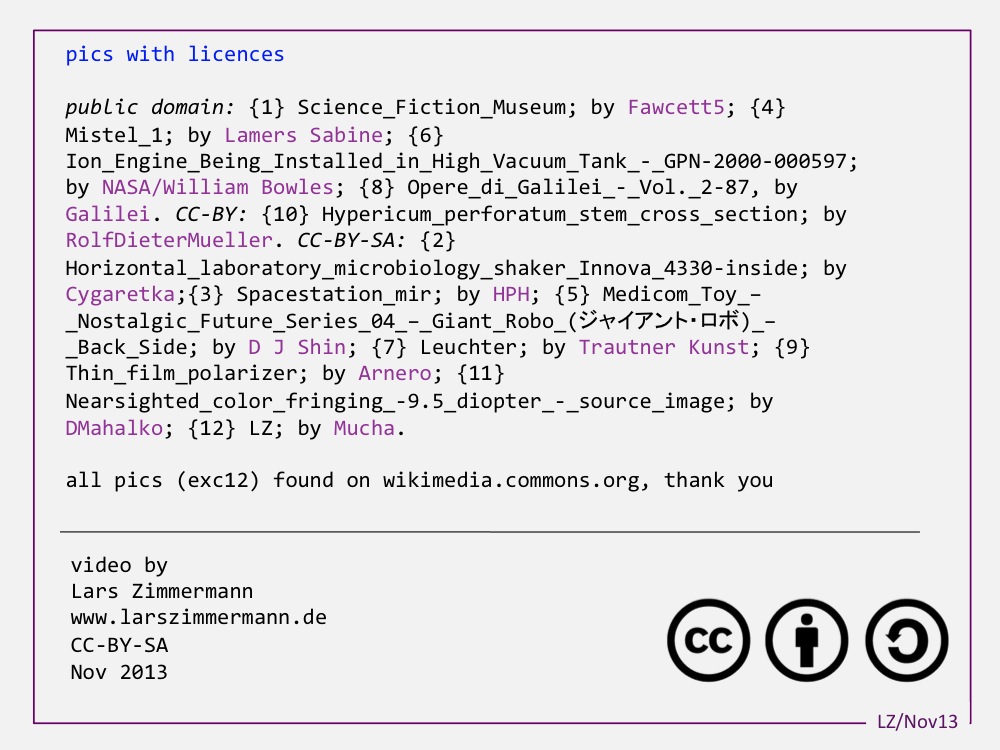Open Source Hardware Documentation Project #1: ASSUMPTIONS
(en;–)
(This is part of my open source hardware documentation project.)
I was planning to present this in a video. I prepared everything 6 months ago. But as everything developes fast paced and there is no time to produce the video i decided to publish it as text. The text was made to be spoken. So this explains the rhythm.
.
Slideshow Images for half the video: On SlideShare, Download as PDF
*
.introduction.
Hi, iam Lars, from OWi – a project about open source for an ecological and waste free economy that works with closed material cycles. Will open source for physical objects be the key to make this possible and happen?
This is the logo of the OWi-project make with a metal construction kit for kids.
.how.to.open.source.hardware.?
And i begin hereby my research project on open source hardware documentation. How to open source products? How to share and provide information about them, produce information and collaborate on it? So that the possibilities of Open Source for collaboration, innovation, cycles of materials, access and adaption gets activated.
This is the first video (text) in the project. It shares the basis assumptions i start from. Just basic ideas, suppositions and ground rules i start the research project from.
Of course there are people out there doing this, documenting hardware. And they are using tools. But i think, most of those tools are far off the real potential of openness. We need to develope new ones.
So i start my collection of thoughts on that.
Here is the list with the ideas. It is of course not perfect structured and named as iam at the beginning the process. I will explain everything briefly.
1.platform.independency.
First one is platform independency. Building an somehow centralized platform lets say something like facebook where people are supposed to upload and organize their stuff is probably the wrong idea. For two reasons:
First. When i’am building something, i really want to keep full control. Producing digital representations of physical objects is hard and often a big obstacle. And when i deceide to do it anyway, i want to be in control of every little part.
Because everything is part of the individual design process itself. I don’t want to go to a plattform, where the people behind can decide tomorrow to shut it down, change something like the look, add new features or remove others. When i want to build something i go all the way.
And the Second reason is decentralization! Open Source is about free information. Free as in „Go whereever you want to.“ You are free to copy the information. And you are free to move the information. So the freedom and openness of the information happens, comes true and works best when it is moving. Moving between different platforms, webpages, servers, pockets, usb-sticks, systems and so forth. Creating a centralized platform is the opposite idea! You want to gather all of them in one spot, and bind them.
So a centralized platform seems the wrong idea. Decentralization must be the key. Give freedom to the information. So it can go and grow where the attention is and the attention can go where the information is. Whatever system got build it has to be build for this, gain this and gain from that.
.1(a).metaphor.one.libre.office(everone,everywhere,everytime)
So how it should be?
I think a good metaphor is Open Office or Libre Office – the Open Source Office Software. Everybody can find, download, install and run the software and very easily create and edit files with it. And right now it seems to be relatively shure that this will still be the case five years from now. Because many people rely on the system and have an interesst in keep it running.
And you can do with the files, what ever you want! Transform them into many other formats, transmit them, modify them while beeing offline, attach them, make an html document (a website) from it by just clicking on a button in the programm and upload it to a server to display the document online or store them and so on.
It is free to go. And can be understood everywhere. This is a decentralized plattform. The files are free. And the editing software is open and free as well. Freedom is the platform!
(A browser could also have been a good metaphor for this. It is everywhere, there will be browsers for a long time. And with an edit function you can work with them everywhere.)
.1(b).metaphor.two.JSON(machine.readable)
Another great metaphor is JSON.
JSON is a data format with all the abilitys mentioned by now. But it adds a new one on top.
Iam not a programmer and there is the possibility that i did not understood this right. But the basic idea i got from hearing about JSON is probably interessting anyway.
JSON is a data format that is easy to read for humans and easy to read for machines at the same time. The code is easy and looks almost like plain text, so it is easy to understand and edit for humans. But at the same time machines can understand it and can work with it.
So here is the assumption: Whatever the documentation looks like – it should be easy to understand and edit for humans and at the same time somehow or in some parts be machine readable…
This would give us the possibility to use the intelligence of computers to organize and develope our products and the processes in and behind them. The internet of things will become really interessting and an ecological economy will become really possible when the assembly, the dissassembly and the rearangement of product-parts can be processed easily, everywhere and decentralized with the help of machines.
*
This was the first basic assumption. There are some more that will make the first even more interessting!
2.complexity.from.simplicity
Simplicity is important. It lowers the entrance level for everyone and works great for openness. „…a truly great tool lends itself to uses never expected.“ (Eric. S. Raymond)Good tools are often simple.
But the tool has also to allow great complexity if it wants to be useful for professionals. And strong.
There should be a simple, understandable and thereby inviting surface. Always the same. A repeating pattern. But it must allow combinations and uses for highly complex purposes. Amateurs and Pros use the same surface and pattern. This doesnt mean that an amateur always understands a pros work. But because he knows the surface and basic structure of the information he is already the first step in the door.
A metaphor for this is the wikipedia. Everybody knows the pages – everything comes in the same shape – nobody has to learn a new format when switching from articles about physics to articles about chemistry. But people use the wikipedia differently. And when i find something i dont understand, i can click the links in the article to the underlying concepts.
The tool has to be easy and useful for everyone. By that it can build a bridge between amateurs and pros. Wich would be great for innovation, education, empowerment and just openness! Complexity from Simplicity – Simplicity for Complexity.
3.producing.information.at.the.same.time.as.producing.things
Producing information at the same time as producing things. This one is more like a question than an assumption.
It has something important about collaboration.
The idea is, that it would be good, if the process of documentation would be the same as or not far away from the process of building and developing the thing. There should not be an documentation process afterwards that asks for a whole new pile of time and a different mindset. No translation needed! Instead the structure of the information should be useful for the developing process as well as for sharing and representing them for the finished object.
This is the only way, that it will work at all and encourage open source hardware collaboration on a large scale. And it would increase the amount of free information considerably.
This one makes the point, that by thinking about such a tool you should not focus only at the representation of the information about objects but also actually on the collaboration for and developing of the objects.
4.circles.implemented
Circles implemented. The last point is – for me from OWi – the most interessting one. And the satelite that makes all the others solvable as i plan to point out in the following videos (texts).
Most people understand, that the way you look at things, the way you try to understand them shapes and creates the things. Documenting something creates a way to look at it. The tools you use to build something shapes it. If you enter a room full of people expecting everone inside is to be bad the chance, that they will behave that way towards you increases. If you try to understand light and look at it as it is particles light will look and behave like particles. If you look at it as it is waves light will look and behave like waves. But what is light? Particles or waves?
So what to do with that when it comes to organize informations about objects?
The question is, can we build into the documentation technique the question for material cycles? This is a great task: To enable interconnectability between parts. A framework with built-in possibilities and inspiration for reuse and recycling.
This will also create the more powerful tool anyway. Because it directs towards a sustainable and preferable future. And it strenghtens (and increases) the connectability of different parts, processes and circumstances. Joining parts! And isn’t buiding all about that.
Give up the linear way and bring in the question of cycles. And you will end up with a more inspiring and helpful tool and developing method and in the end design. Innovation will follow you.
.END.
OK. So much about my assumptions/suppositions for Open Source Hardware and Open Source Products documentation and communication.
The next video or publication has to be about some more ideas i have. Mostly regarding points 2 to 4. Because as iam a non tech guy most things to be said about 1 are already said in this video.
And i have to say, that i have of course already a sketch for a solution concerning 2, 3 and 4 in mind. That made it easier for me to describe 2, 3 and 4 here.
O.K. Thanx for watching.
And if you take more interesst in this project or like to be a part. Don’t hesitate and contact me.
.credits.
Lars Zimmermann, November 2013, www.larszimmermann.de
+
> I N | P R | O U T > I N | P R | O U T > I N | P R | O U T >
